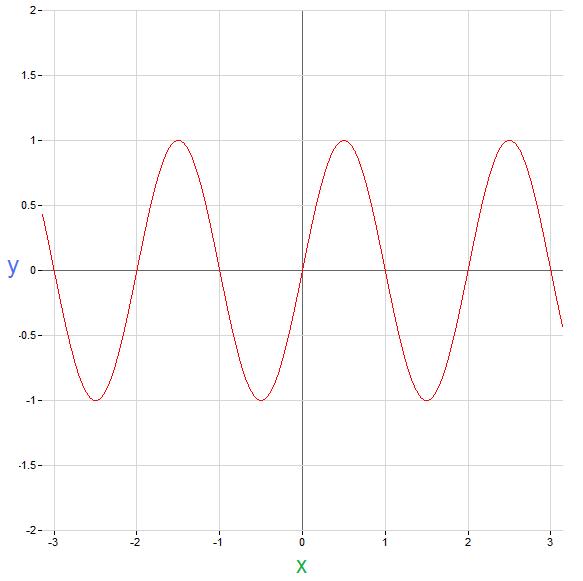(New page: == Periodic Functions in Continuous Time == * Functions are classified as periodic if there exists <math>T\!</math> such that <math>x(t+T)=x(t)\!</math>. Image:Sinx.jpg) |
(→Periodic Functions in Continuous Time) |
||
| Line 1: | Line 1: | ||
== Periodic Functions in Continuous Time == | == Periodic Functions in Continuous Time == | ||
* Functions are classified as periodic if there exists <math>T\!</math> such that <math>x(t+T)=x(t)\!</math>. | * Functions are classified as periodic if there exists <math>T\!</math> such that <math>x(t+T)=x(t)\!</math>. | ||
| + | <br> | ||
| + | The following is an example of a periodic function: | ||
| + | <center><math>y(x)=sin(pi*x)\!</math></center> | ||
| − | [[Image: | + | <center>[[Image:Sinpix_ECE301Fall2008mboutin.jpg]]</center> |
| + | |||
| + | When <math>x\!</math> is equal to 0, | ||
Revision as of 17:41, 3 September 2008
Periodic Functions in Continuous Time
- Functions are classified as periodic if there exists $ T\! $ such that $ x(t+T)=x(t)\! $.
The following is an example of a periodic function:

When $ x\! $ is equal to 0,

